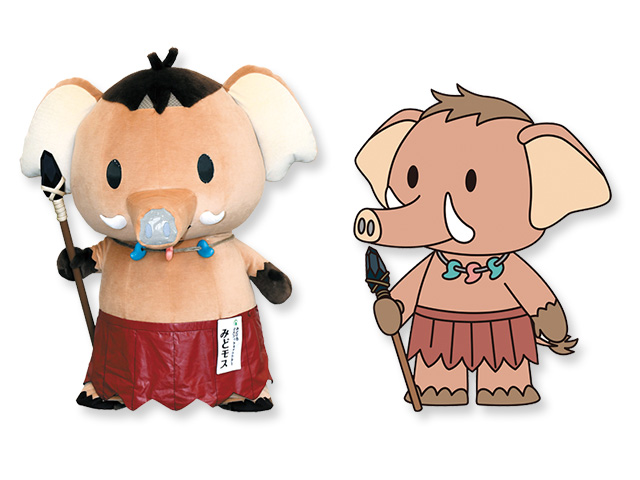My shopping cart
Your cart is currently empty.
Continue ShoppingEver wondered why a town would suddenly decide they need a dancing tofu or a roller-skating racoon as their mascot? No, you probably haven't... Anyway, let's dive into the wacky world of Japanese mascot creation!
-disclaimer: This post will focus on official local and prefectural mascots, because we work with a lot of those for our subscription box-

1. The "Aha!" Moment: Similar to humans, a mascot's life begins as an embryo that is inseminated with a sperm cell, except for mascots that embryo is entirely metaphorical and that sperm cell is something called an 'idea'.
It all starts when a local government, town, or someone somewhere wakes up and thinks, "You know what we're missing around here? A giant dancing radish that the community can rally behind," or something in that vein.

"A radish *smacks lips* with two hamburger patties *licks teeth* piled high with vegetables and cheese *drools* between silky soft buns *eyes like a feverish wolf* drizzled with sesame seeds. Yeah, that's the kind of mascot we need."
There are many reasons why places decide it's time for a mascot, but in general it's to attract attention to the area, or bring together the community. It also doesn't hurt that the most popular mascots in Japan generate INSANE amounts of money for their areas. For example, Kumamon from Kumamoto Prefecture brought in revenue of approximately ¥1590 billion for his prefecture in the year 2022.

https://kumanichi.com/articles/986356
Kumamon is definitely the most valuable local mascot in Japan right now
2. Rallying the Troops: Once the community has decided that they want a mascot, it's time to figure out what it will look like. Who better to design a mascot than the very people who will be forced to interact with it on a daily basis!
Local contests are held, and suddenly everyone's an artist. Especially the elementary school children. SO MANY mascots get their designs from elementary school children... like MidoMos (_みどモス) the mammoth of Midori City, Gunma Prefecture. He was the result of a drawing contest that the city held. The contest received 581 entries, with 445 coming from elementary school students. The design that received the most votes from about 4,100 local elementary and middle school students was chosen.

https://shop.gyosei.jp/online/archives/cat01/0000019396
You'll notice MidoMos is looking a lot more 3D these days. It's all thanks to THE CONTEST
3. Doodle Drama: Once the contest entries start to come in, it's usually up to a few artists to sifting through everything and narrow down the selection. Some sketches scream genius, others... well, let's just say they're "unique". A lot of them are really boring too, but you usually don't get to hear about those ones.

The Mascot Mix team designed the mascot 'Plunky the Half-melted Summer Popsicle' but nobody has wanted to use him yet
Often, mascot designs incorporate aspects of the locality, be it famous foods, landmarks, or local legends.
For instance, the mascot Yahatainu is a potato dog not just because dogs and potatoes are extremely cute (don't deny it, you've looked at potatoes and thought the same thing) but also because the City of Kai, his hometown, is famous for their special 'Yahataimo' potatoes.

https://www.city.kai.yamanashi.jp/soshikinogoannai/shokokankoka/kankokoryugakari/1_1/1483.html
Believe it or not Yahatainu loves to eat potatoes. Check out our post about mascot cannibalism
4. The Feedback Frenzy: When the contest entries have been narrowed down to a handful of finalists, it's time for the designs to face the firing squad: again, usually elementary schoolers. Japanese places love leaving the destiny of their mascot characters in the capable hands of younger generations.

Capable hands
The final design is chosen by vote, and there is usually a big ceremony where the mascot's official design is revealed to the general public. Even if some people are unhappy with the results, the mascot takes a step closer toward realization.

https://en.wikipedia.org/wiki/Sento-kun
The mascot Sentokun received a lot of hate when he was unveiled. The Mascot Mix team has no idea why because we ADORE him
5. Getting All Dolled Up: Final touches are added. Sometimes, this is the stage where the mascot actually receives its name. Again, there's usually a contest held in the community, and again, it's usually up to the elementary-middle school children to make the final decision.

The children must learn that it is by their hands that the mascots are made, and that by their hands the mascots may one day be destroyed.
6. The Big Stitch-Up: Artisans craft the final design into a costume. There are actually businesses completely dedicated to creating mascot costumes, and they KNOW THEIR STUFF!

"If I have to make one more Pikachu look-alike I'm going to move to the United States and live the rest of my life pretending I'm Korean."
7. Strutting Their Stuff: Ta-da! The mascot finally hits the streets, but not before a big 'public reveal' ceremony shows them off for the first time. The mascot is ready to dance, wave, and entertain the masses while occasionally bumping into things. Afterall, that's their purpose in life... just like the rest of us!

https://www.town.hyogo-taishi.lg.jp/soshikikarasagasu/asuka/boujii/1615512948325.html
The mascot Boujii doesn't bump into anything though. Also, because he's an elementary school student, did he select his own design?
In conclusion, behind every mascot's spirited dance and cheerful wave lies a tale of sketches, community choices, and countless brainstorming sessions. So, the next time you spot a mascot energetically promoting its hometown, remember: they've navigated a journey more intricate than the winding streets of Kyoto. And if you ever ponder why a certain mascot appears to be perpetually puzzled... well, now you're privy to the vibrant voyage it embarked on. Offer them a nod of appreciation or a gentle bow. They truly deserve it!